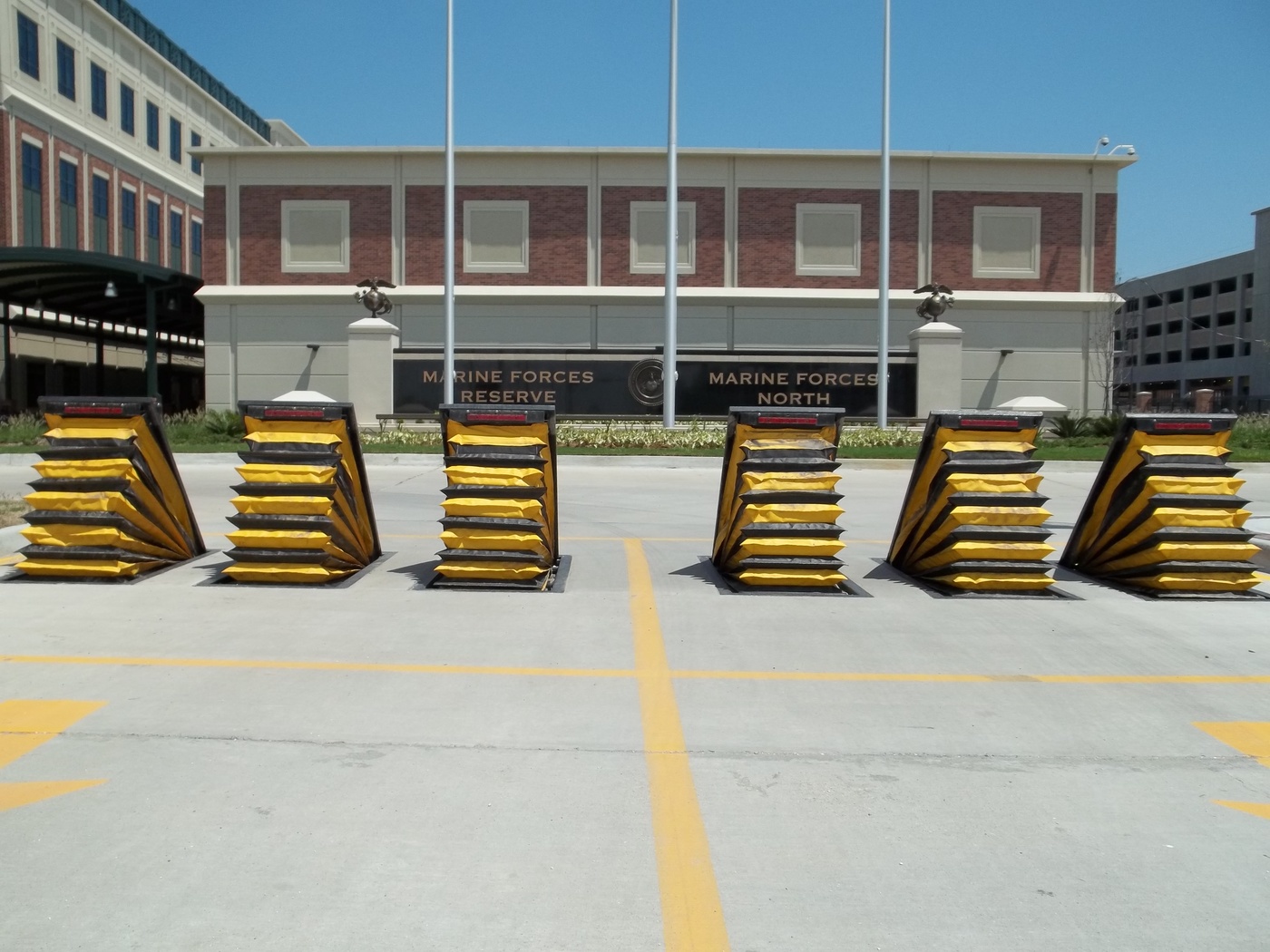What Does Wedge Barriers Do?
Wiki Article
The Greatest Guide To Wedge Barriers
Table of ContentsIndicators on Wedge Barriers You Need To KnowSome Known Incorrect Statements About Wedge Barriers

The Best Guide To Wedge Barriers
The continuing to be pressure applied to the cam web cam deploy release wedge plate 16 may might provided supplied an electromechanical actuator 84 or other actuator. The springtime assembly 54 and the actuator 84(e. Wedge Barriers. g., electromechanical actuator)may run together to equate the web cam and raise the wedge plate 16.
As mentioned above, the spring assembly 54 applies a constant force on the webcam, while the electromechanical actuator may be controlled to exert a variable pressure on the webcam, consequently enabling the lifting and decreasing( i. e., releasing and withdrawing )of the wedge plate 16. In certain personifications, the consistent pressure used by the spring setting up 54 may be flexible. g., electromechanical actuator) is disabled. As will certainly be appreciated, the springtime assembly 54 might be covered and secured from debris or various other aspects by a cover plate(e. g., cover plate 68 displayed in FIG. 4) that might be considerably flush with the raised surface 38 of the structure 14. As pointed out over, in the deployed setting, the wedge plate 16 serves to obstruct accessibility or travel beyond the barrier 10. The barrier 10(e. g., the wedge plate 16 )may obstruct pedestrians or automobiles from accessing a building or pathway. As talked about above, the barrier 10 is affixed to the anchor 30 secured within the structure 14,

front brackets 71. As a result, the linkage assemblies 72 may pivot and rotate to allow the collapse and expansion of have a peek here the affiliation settings up 72 throughout retraction and deployment of the bather 10. The linkage assemblies 72 cause activity of the wedge plate 16 to be restricted. For instance, if an automobile is taking a trip in the direction of the released wedge plate 16(e. For instance, in one condition, the safety legs 86 might be extended duringupkeep of the obstacle 10. When the safety and security legs 86 are released, the safety legs 86 sustain the weight of the wedge plate 16 against the surface 12. Consequently, the lifting mechanism 50 might be shut down, serviced, gotten rid of, replaced, etc. FIG. 5 is partial viewpoint sight of an embodiment of the surface-mounted wedge-style obstacle 10, highlighting the advice web cam 80 and the camera surface areas 82 of the training device 50. Particularly, 2 cam surface areas 82, which are referred to as reduced web cam surface areas 83, are positioned below the webcam 80. The lower camera surfaces 83 may be taken care of to the surface area 12 (e. For instance, the lower webcam surfaces 83 and the installing plate 85 might create a single piece that is protected to the support 30 by screws or other mechanical bolts. Furthermore, 2 web cam surfaces 82, which are described as upper web cam surfaces 87, are positioned over the web cam 80 and coupled to (e. In various other embodiments, stepping in layers or plates may be placed in between the surface 12 and the lower cam surface areas 83 and/or the wedge plate 16 and the top webcam surface areas 87 As stated above, the cam 80 converts along the webcam surfaces 82 when the wedge plate 16 is raised from the withdrawed position to the deployed placement. Additionally, as pointed out above, the spring assembly 54 (see FIG. 3 )may give a force acting click here for more info on the web cam 80 in the direction 102 through spring rod 58, which may reduce the force the electromechanical actuator 84 is required to put on the cam 80 in order to activate and raise the wedge plate 16. 1 )to the released setting(see FIG. 4). As revealed, the webcam 80 consists of track wheels 104(e. g., rollers), which get in touch with and convert along the cam surfaces 82 during procedure.
Report this wiki page